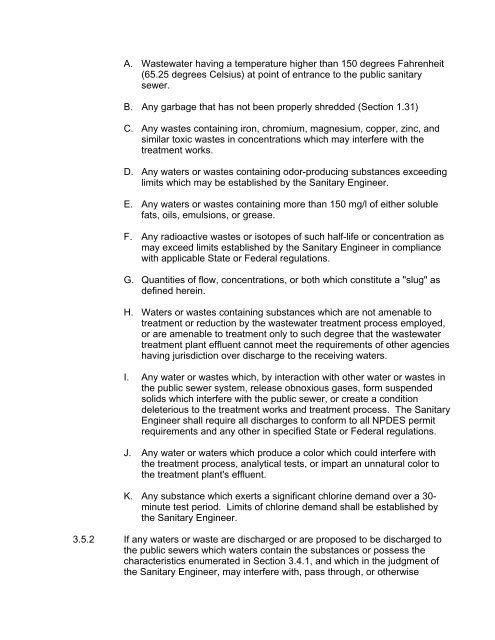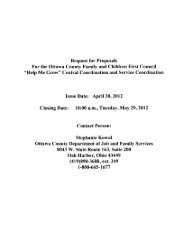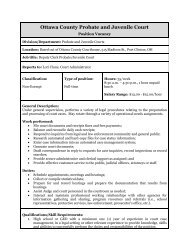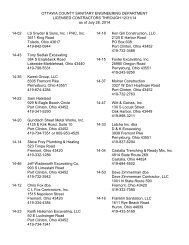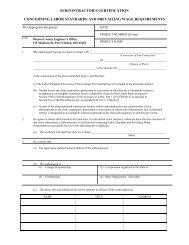ottawa county sewer district wastewater rules and regulations for ...
ottawa county sewer district wastewater rules and regulations for ...
ottawa county sewer district wastewater rules and regulations for ...
You also want an ePaper? Increase the reach of your titles
YUMPU automatically turns print PDFs into web optimized ePapers that Google loves.
A. Wastewater having a temperature higher than 150 degrees Fahrenheit<br />
(65.25 degrees Celsius) at point of entrance to the public sanitary<br />
<strong>sewer</strong>.<br />
B. Any garbage that has not been properly shredded (Section 1.31)<br />
C. Any wastes containing iron, chromium, magnesium, copper, zinc, <strong>and</strong><br />
similar toxic wastes in concentrations which may interfere with the<br />
treatment works.<br />
D. Any waters or wastes containing odor-producing substances exceeding<br />
limits which may be established by the Sanitary Engineer.<br />
E. Any waters or wastes containing more than 150 mg/l of either soluble<br />
fats, oils, emulsions, or grease.<br />
F. Any radioactive wastes or isotopes of such half-life or concentration as<br />
may exceed limits established by the Sanitary Engineer in compliance<br />
with applicable State or Federal <strong>regulations</strong>.<br />
G. Quantities of flow, concentrations, or both which constitute a "slug" as<br />
defined herein.<br />
H. Waters or wastes containing substances which are not amenable to<br />
treatment or reduction by the <strong>wastewater</strong> treatment process employed,<br />
or are amenable to treatment only to such degree that the <strong>wastewater</strong><br />
treatment plant effluent cannot meet the requirements of other agencies<br />
having jurisdiction over discharge to the receiving waters.<br />
I. Any water or wastes which, by interaction with other water or wastes in<br />
the public <strong>sewer</strong> system, release obnoxious gases, <strong>for</strong>m suspended<br />
solids which interfere with the public <strong>sewer</strong>, or create a condition<br />
deleterious to the treatment works <strong>and</strong> treatment process. The Sanitary<br />
Engineer shall require all discharges to con<strong>for</strong>m to all NPDES permit<br />
requirements <strong>and</strong> any other in specified State or Federal <strong>regulations</strong>.<br />
J. Any water or waters which produce a color which could interfere with<br />
the treatment process, analytical tests, or impart an unnatural color to<br />
the treatment plant's effluent.<br />
K. Any substance which exerts a significant chlorine dem<strong>and</strong> over a 30-<br />
minute test period. Limits of chlorine dem<strong>and</strong> shall be established by<br />
the Sanitary Engineer.<br />
3.5.2 If any waters or waste are discharged or are proposed to be discharged to<br />
the public <strong>sewer</strong>s which waters contain the substances or possess the<br />
characteristics enumerated in Section 3.4.1, <strong>and</strong> which in the judgment of<br />
the Sanitary Engineer, may interfere with, pass through, or otherwise


